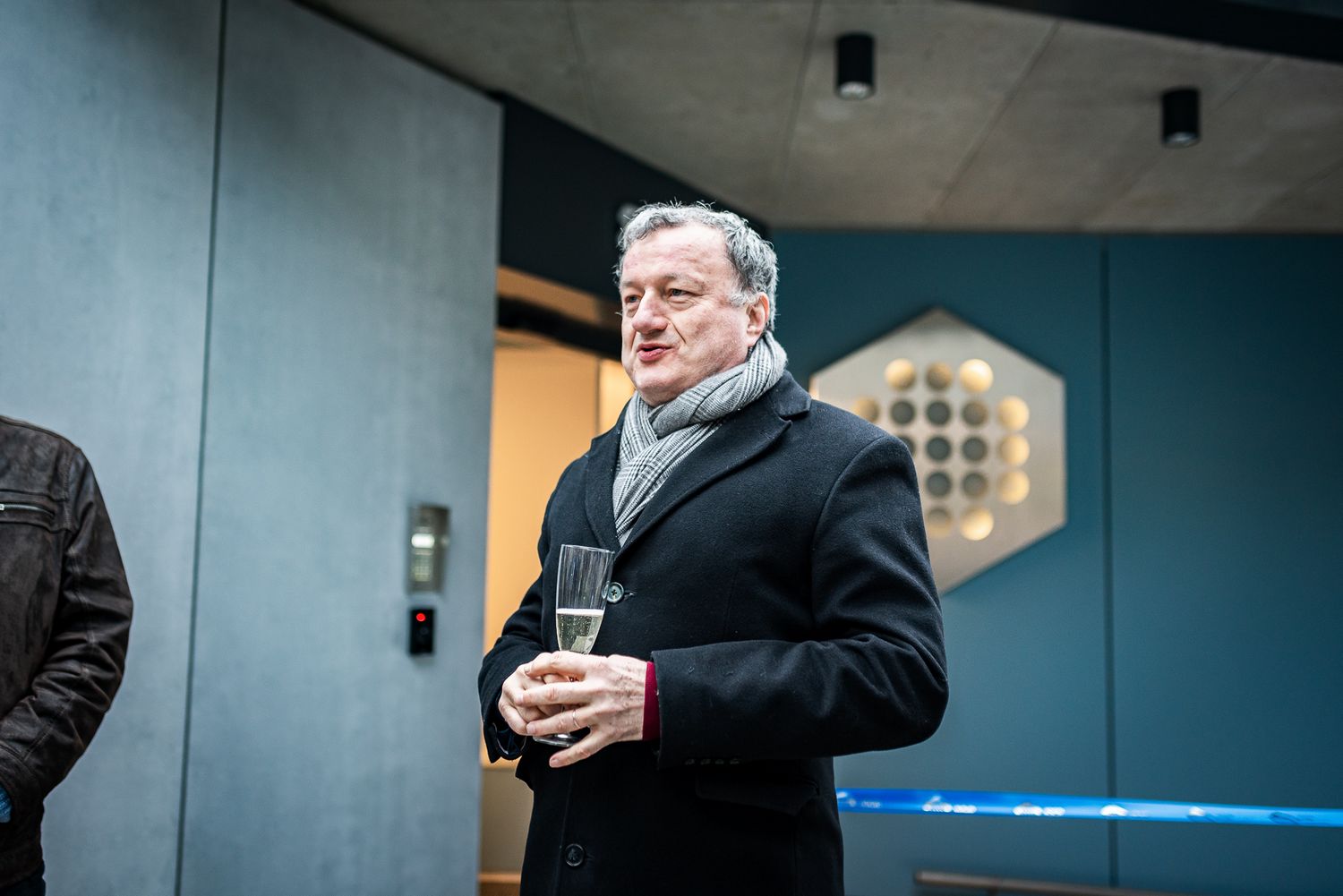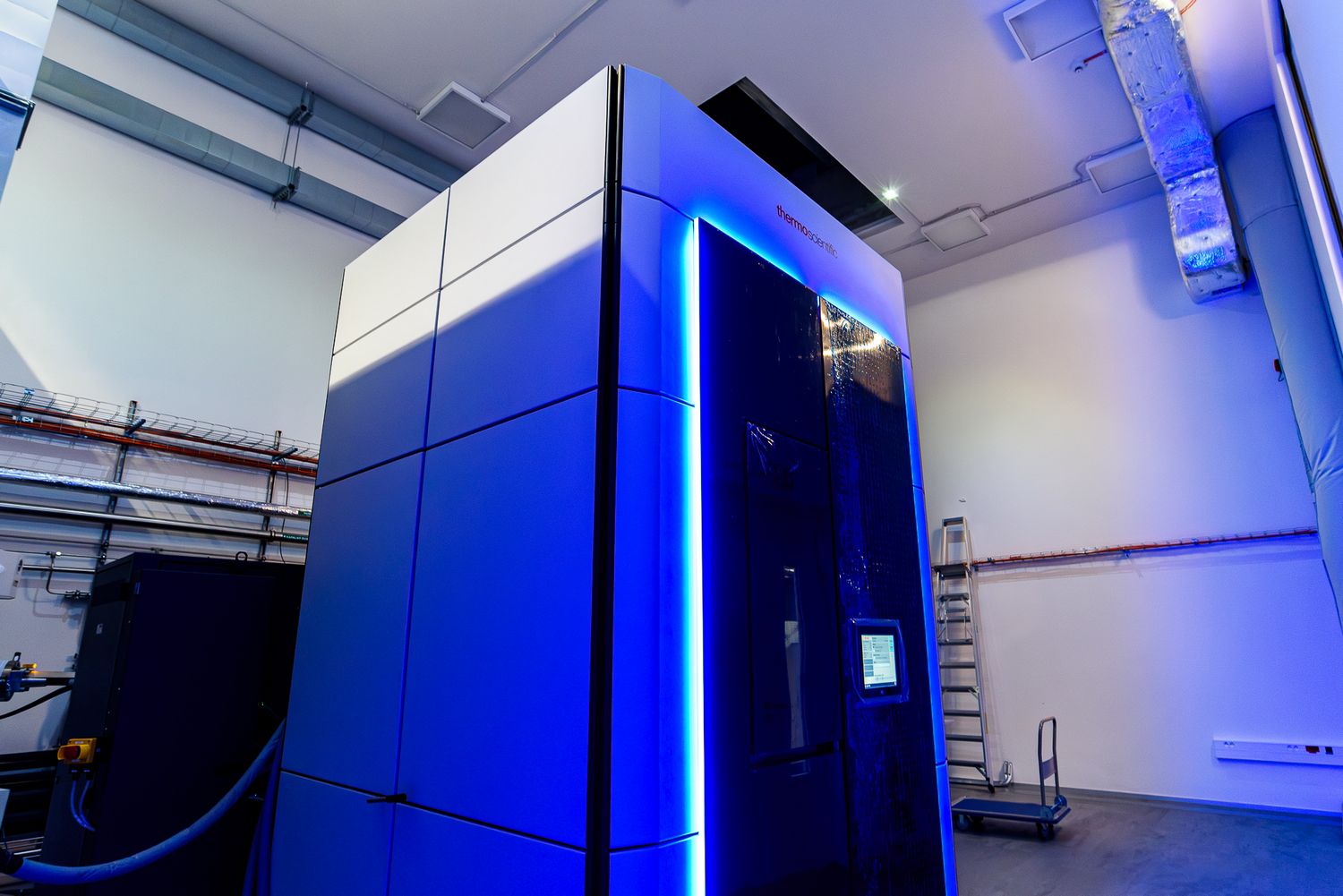A new world-class facility for cryogenic electron microscopy opens at IOCB Prague

A new building has gone up on the IOCB campus that will serve as headquarters for the cryogenic electron microscopy laboratory of Dr. Tomáš Kouba. Building K will house two state-of-the-art instruments, a 300 kV Krios G4 cryogenic transmission electron microscope, still a rarity in the Czech Republic, together with a 200 kV Glacios.
“Cryogenic electron microscopy lets us examine biomolecules, such as proteins, nucleic acids, and their complexes, at near-atomic resolution and create 3D models of them. We can also use it to observe viruses, bacteria, and cell structures,” explains Tomáš Kouba.
It works on the principle of rapid cooling of a hydrated sample to cryogenic temperature. The sample is immersed in liquid ethane cooled by liquid nitrogen to approximately -180 °C, leaving no time for a crystal lattice to form during the freezing process. Everything can then be observed in an environment of amorphous ice; with a bit of imagination, we might say the sample appears to be embedded in glass.








In addition to the instrumentation, the new IOCB building will also house a laboratory for scanning probe microscopy, support workplaces, an additional liquid nitrogen tank, and associated technological facilities. Plans call for the eventual installation of a helium recovery device, which IOCB collaborates on with the Institute of Physics of the Czech Academy of Sciences and the Faculty of Mathematics and Physics of Charles University.
"The opening of the new Building K is a fantastic opportunity to further develop the potential of scientific excellence at our institute. Few investments make better sense than those in technology that can be used by our outstanding researchers," says IOCB director, Prof. Jan Konvalinka.
The building’s novel design is the work of the head of the technical division at IOCB, Karel Šobíšek: “In addition to various technological requirements, the building also had to comply with strict supervision by the authorities. This fact and the need to shield the workplace from external influences are the main reasons the new Building K isn’t visible from the street,” he says.
Another extraordinary aspect of the building is that it has been built primarily as a base for cryogenic electron microscopy. Moreover, thanks to an ingenious solution, the spaces of the two-storey building, which is largely sunk below ground level, are isolated from external influences and vibrations, which is crucial for this kind of observation. The interior features plenty of exposed concrete, while the outside spaces will be surrounded by greenery to blend in with the garden and relaxation zones for IOCB employees.











